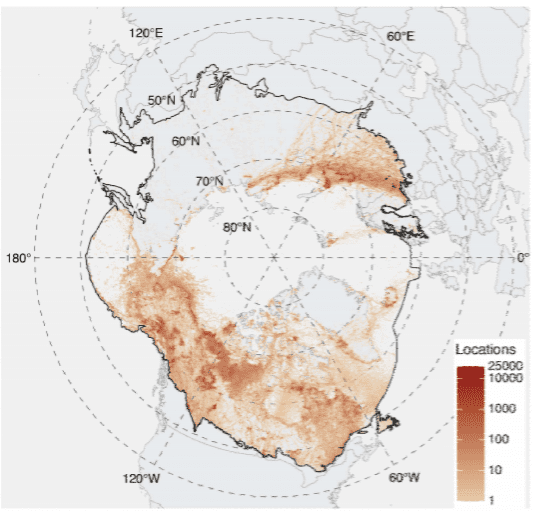An analysis of over 200 studies carried out over the past 29 years shows that climate change is having a big impact on how Arctic animals behave. All Arctic creatures are affected, the study authors note.
“There’s changes everywhere you look — everything is changing,” said Gil Bohrer, corresponding author of the new study published online Thursday in the journal Science.

Just like mobility data showed that humans were spending more time at home at the beginning of the pandemic, mobility data can also help us understand what’s going on in the animal world. Contrary to humans, however, animals don’t spend most days with a smart device in their pocket to help with localization. So instead, humans are tagging different animals with unobtrusive GPS devices.
This laborious practice has been going on for decades. This is how we have data on bird and fish migration and how we can understand how some creatures are moving around their habitats — and how they are responding to climate change.
“We have the ability to monitor animal movements on a very large scale,” says Eliezer Gurarie at the University of Maryland. “It seems that animals are unknowingly responding and adapting to climatic changes, and have been doing so for years.”
A newly-assembled database compiles Arctic animal mobility data from the past three decades. The Arctic Animal Movement Archive features data from 86 species, from whales to caribou to eagles. It combines the work of over 100 universities, conservation groups, and government agencies to paint the most detailed map of animal mobility in the Arctic ever developed.
It’s important, hard-won data, researchers say: catching animals and tagging them with sensors is never easy.
“What we ended up with is this massive dataset that can tell us how the behavior of animals is evolving in the face of climate change,” said Bohrer, a professor of civil, environmental, and geodetic engineering at The Ohio State University.

But while the database itself is impressive, the results are concerning.
Researchers have known for quite some time that the Arctic is heating up. Over the past three decades, the Arctic has warmed at roughly twice the rate of the rest of the globe, a phenomenon known as Arctic amplification. This phenomenon is taking a toll on creatures and ecosystems in multiple ways.
For instance, the migration data of over 900 female reindeer over the past 15 years is showing that they are giving birth a day earlier every year, likely as a result of rising temperatures. This puts them at an increased risk of extreme storms, which can be life-threatening. In addition, if they are no longer giving birth at the same time that nutritious food sprouts on the tundra, this makes them even more vulnerable, as they are starting to become out of sync. As reindeer populations are already decreasing and outright plummeting in some regions, this shows another way in which climate change is affecting Arctic creatures (as well as the local populations which rely on these animals).
Similarly, golden eagles (which normally nest in the Arctic) are starting to migrate earlier and earlier — by one day every 2 years. This trend, which has been observed over the past 25 years, is also believed to be caused by global warming.
“These patterns are tracking global warming,” says Gurarie. In the past decade alone, the Arctic has heated up by 0.75 degrees Celsius (1.35 degrees Fahrenheit), while the rest of the world has heated up by 0.8 degrees C over the past 137 years.
This is exactly why this type of dataset is so important. Year-to-year, the data may not be so striking, and temperature anomalies can happen. But long-term climate data helps to average all that out and enables researchers to understand the big picture.
Not all animals are adapting to the changes, which are expected to become even more extreme. For predators, for instance, changing timing is dangerous as their ability to hunt depends on their ability to move around large areas of land — which is itself impacted by higher temperatures. What researchers are seeing out of the 15 million data points from 8000 animals is chaos and imbalance.
“When you see the big picture, it’s kind of scary that everything’s changing — so many different aspects … every component of the system is changing in a different way. We’re going towards a large imbalance, I think,” says Bohrer.
Ultimately, the database can also help researchers devise better conservation techniques, especially for endangered species. Climate change in the Arctic will “only become more extreme” says Bohrer, so these measures have never been more important.



